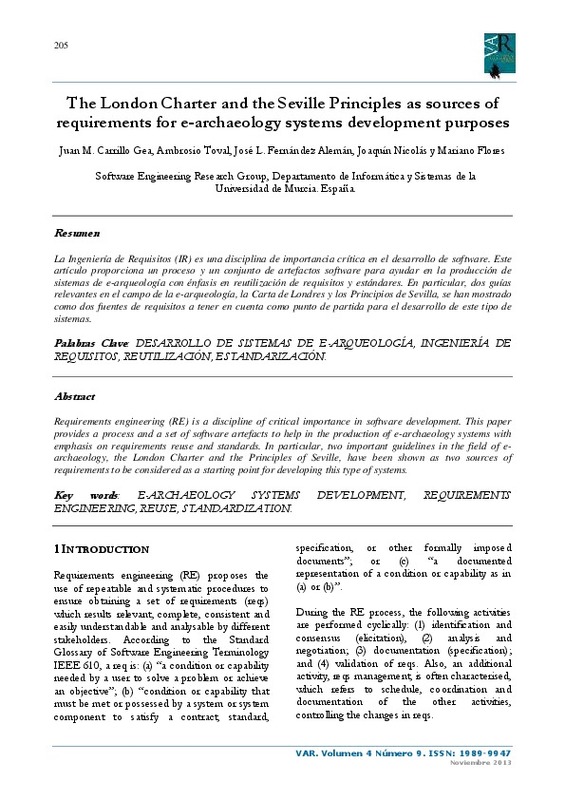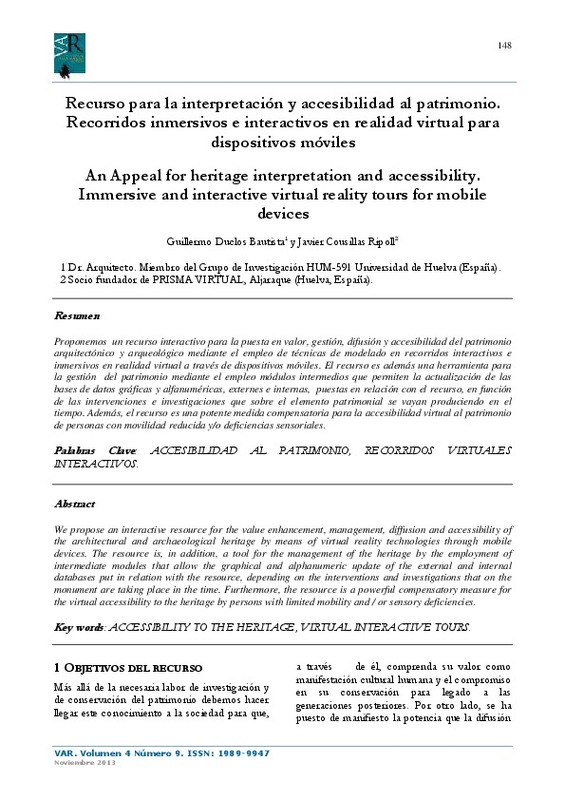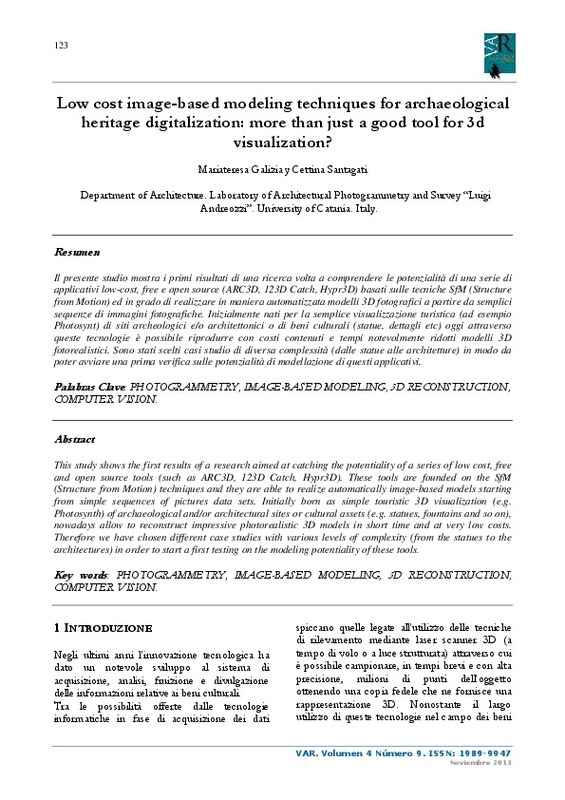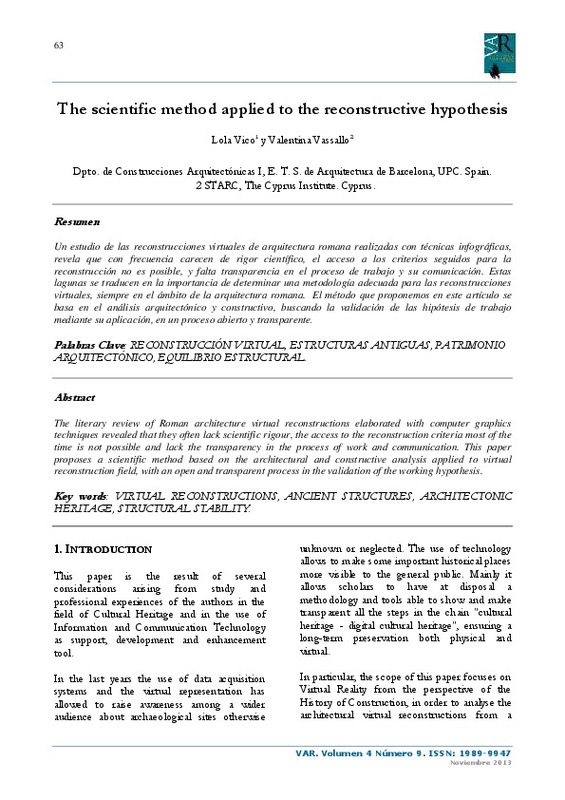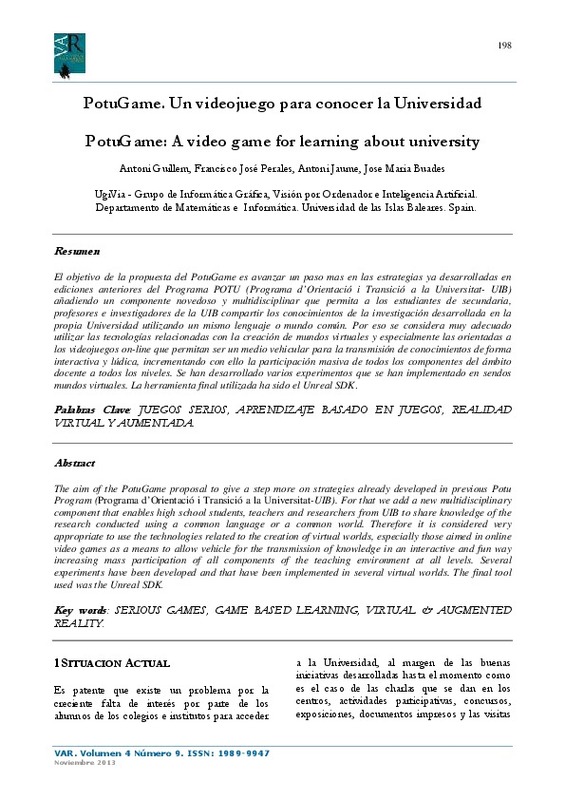- RiuNet repositorio UPV
- :
- Investigación
- :
- Material investigación. Editorial UPV
- :
- Revistas UPV. Editorial UPV
- :
- Virtual Archaeology Review
- :
- Virtual Archaeology Review - Vol 04, No 09 (2013)
JavaScript is disabled for your browser. Some features of this site may not work without it.
Refinar
Virtual Archaeology Review - Vol 04, No 09 (2013)
Tabla de contenidos
- Towards a model for Heritage Information. Model Generation of Immovable Heritage at the time of Their Legal Protection
- The Form of the Early Church of San Juan Bautista de Oviedo: Analysis and Contextualization of Archaeological Remains Through the use of Computer Graphics
- Proposal for the virtual and material reconstruction through anastylosis of the archaeological remains of the Patio of the Renaissance Palace of the Ambassador Vich in Valencia, Spain
- Virtual Reconstruction of the Medieval Palace of Pedro I in the Royal Alcázares of Seville: The Architect's Cut
- The virtual reconstruction of the andalusian palace of Onda (Castellón): Architecture and Territory
- Augmented Reality System for the musealization of archaeological sites
- Lost Cities, Recovered Cities: Technology in the Service of the Past
- Virtual Reconstruction of Roman Household Furniture Using Ancient Sources
- The scientific method applied to the reconstructive hypothesis
- Architectural heritage 3D and semantic information visualization based on open standards
- Recreation of architectural structures using procedural modeling based on volumes
- Combining classical metrology models
- A Virtual Reconstruction Methodology for Archaeological Heritage in East Asia – Practical Experience from the Re-relic Program in China
- Towards a three-dimensional reconstruction of decorated hispanic terra sigillata and pottery molds from the pottery workshop at Villares de Andújar (Jaén)
- The Sanctuary of Jupiter Anxur in Terracina: a typological reconstruction as an aid for on site visits
- The Porta Principalis Sinistra of the VII Gemina Legion Camp in Leon: From Archaeological Intervention to Virtual Reconstruction
- Low cost image-based modeling techniques for archaeological heritage digitalization: more than just a good tool for 3d visualization?
- Scientific drawing: an introduction to drawing as a language in fieldwork
- The Recovery and Restoration of Roman Wall Paintings in Southeast Spain
- Virtual visualization of La Quintilla
- An Appeal for heritage interpretation and accessibility. Immersive and interactive virtual reality tours for mobile devices
- Infographical Reconstruction of the Northern Necropolis of the City of Onoba
- Procedural modeling historical buildings for serious games
- Motivational Rehabilitation using Serious Games
- Serious Games Network
- Virtual reconstruction of the roman villa in La Quintilla (Lorca) based on the existing physical evidence and related scientific comparisons as a reference
- Medieval Victoria-Gasteiz Interaction between virtual and augmented reality in the 16th century
- PotuGame: A video game for learning about university
- The London Charter and the Seville Principles as sources of requirements for e-archaeology systems development purposes
- Methodological proposal to generate interactive virtual walkthrough
- Computer Simulation of Multidimensional Archaeological Artefacts



